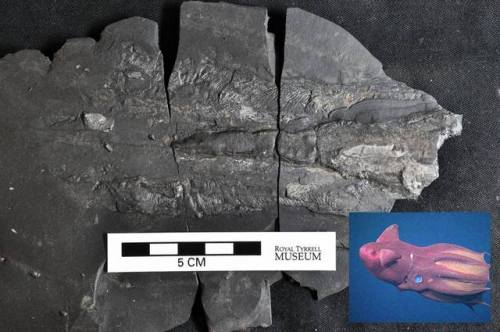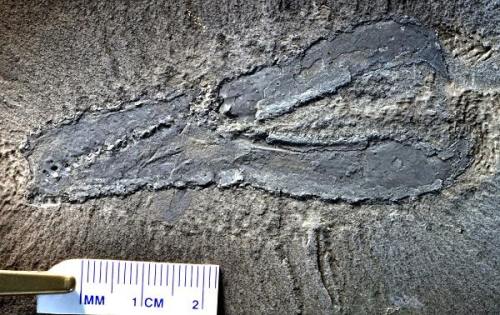An early Jurassic Konservat-LagerstätteThe mouthful of German in the title is a term awarded to spec
An early Jurassic Konservat-LagerstätteThe mouthful of German in the title is a term awarded to special sites that have (for one geological reason or another) preserved fossils of exceptional quality, usually including the elusive soft parts and species that fossilise so seldom and are so sought after by palaeontologists trying to understand the creatures and ecosystems that lived back in deep time (our picture of ecosystems from more conventional fossil sites is biased by the absence of most soft creatures, except as traces such as worm borrows etc). A discovery near Banff National Park in Canada in 2013 is one of the latest to emerge, offering us a window into marine life some 183 million years ago and the only one in North America, the other three found so far being in Europe.These include crustaceans (whose soft shells rarely turn into rock), and the site was first noticed when a scientist spotted that his colleague was standing right atop a lobster. Fish with scales and gills, squid (of the vampire family) with intact ink sacks and some more conventional Jurassic ichthyosaurs were also unearthed. This part of modern Canada was at the other side of the supercontinent of Laurussia to the European discoveries from the same era, allowing a comparison of species and ecosystems across a wide geographical range to be made (though both were in the world spanning Panthalassa Ocean), another treasure trove for those reconstructing palaoenvironments.The preservation occurred during a time of widespread but localised low oxygen zones in the Jurassic seas (see http://bit.ly/2A2kLpG) accompanied by a series of extinctions, though the low oxygen levels prevented decay and kept scavengers at bay, allowing the quality of preservation to happen.LozImage credit: fossilized mantle of a vampyropod, a relative to the modern vampire squid (pictured on bottom right). The ink sack is the raised structure in the center, and muscles have a striated appearance. Credit: Rowan Martindale/The University of Texas at Austin Jackson School of Geosciences and the Monterey Bay Aquarium Research Institute.A lobster, the first fossil found by the team at Ya Ha Tinda Ranch in Alberta, Canada. Credit: Rowan Martindale/The University of Texas at Austin Jackson School of Geoscienceshttp://bit.ly/2jfwCU1http://bit.ly/2jqsPGIhttp://bit.ly/2kFimZohttp://bit.ly/2kKsPSZOriginal paper, paywall access: http://bit.ly/2lgIkQJ__ -- source link
Tumblr Blog : the-earth-story.com
#fossil#lobster#geology#fossilfriday#vampire squid#science#lagerstätte#limestone

